We have set up the quantum labs to be remotely controlled. Here is information on two of them. A recent conference proceeding article on remote labs is here.
Photon Stern-Gerlachs
Photon experiments allow us to model quantum mechanical operations using optical components (polarizers, waveplates) acting as operators on the state of the photons. In this experiment students work out a few of these operations, with polarization analyzers acting the same way Stern-Gerlach apparatus acts on spin 1/2. The apparatus is shown below:

It has several moving parts (from left to right): a rotatable polarizer, a rotatable half-wave plate that is remotely slided in/out of photon path, and a half-wave plate set to 22.5 degrees that is rotated in/out of the path of the photons. The latter, in combination with a polarizing beam splitter, effects polarization analysis in the diagonal basis. The writeup for this lab, which has all the details, is enclosed here.
Single-Photon Interference and Hanbury-Brown-Twiss Test
This lab does not have many moving parts but illustrates the fundamental principle of quantum interference: a photon in a superposition of taking two paths. We also look at the coincidences at the two output ports of the interferometer (which there are none), but which strikingly ilustrate how the photons go through the interferometers as (quantum) waves and are detected whole as (quantum) particles. The image below (taken by students remotely) shows this:
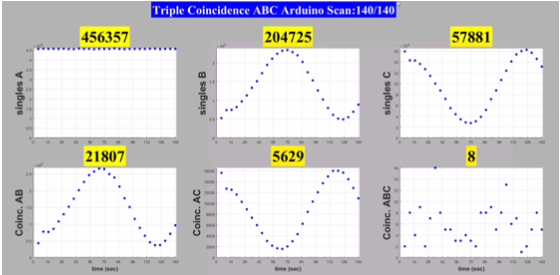
The lab write-up for this experiment is here.
Quantum Eraser
A video showing how this lab works is shown here (35 min). The lab write-up that the students got for 2020 is here, and for 2021 is here (there is an evolution that you can see: we give less directions on what to do, which turned out to give much better outcomes!). Below is a photo of the remote desktop.
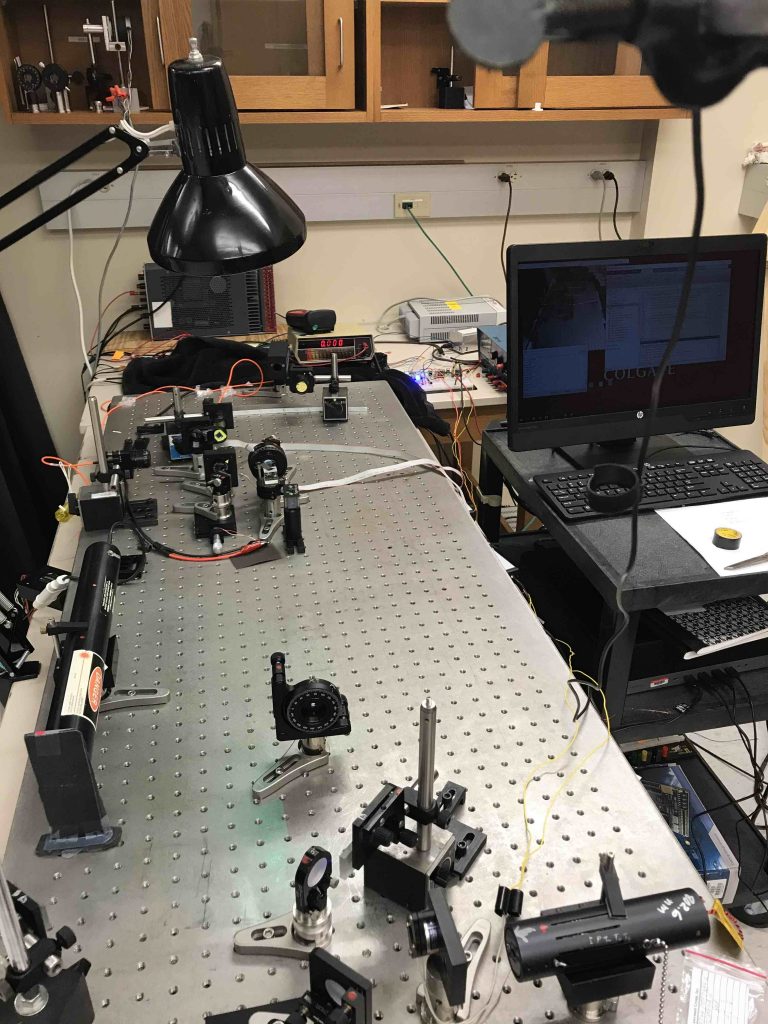

Delayed Choice
A video showing how this lab works is shown here (44 min). The lab write-up for the students in 2020 is shown here, and 2021 here. A photo of the lab and the desktop are shown below.
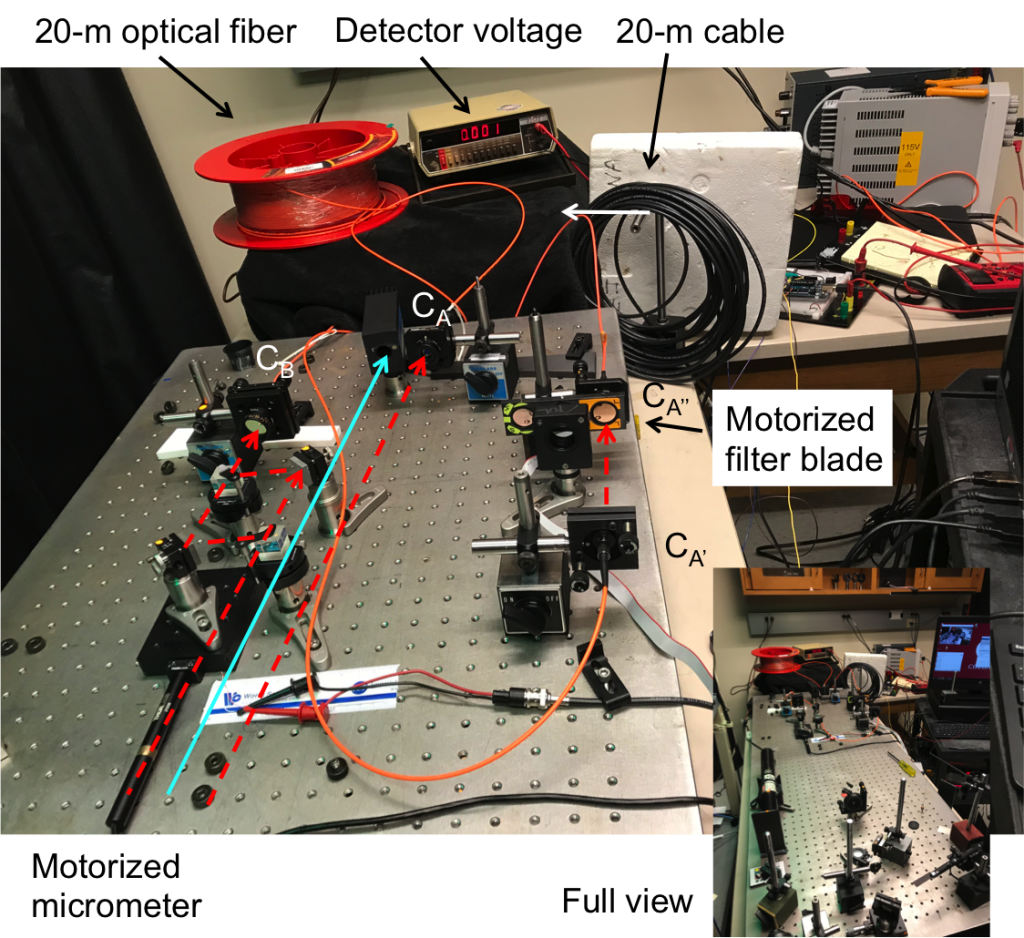
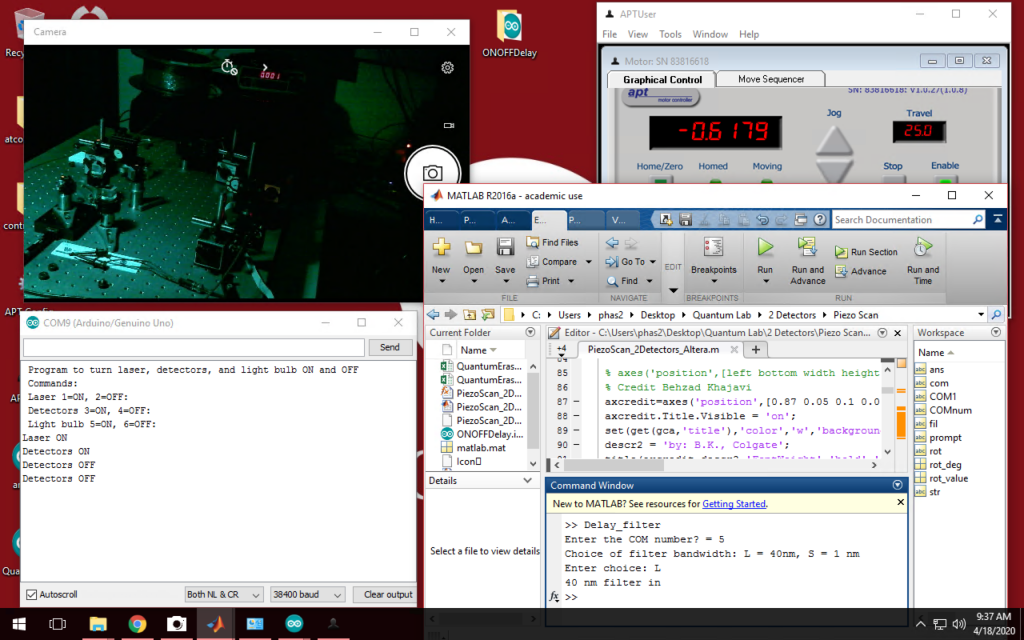
Entanglement and Bell Inequalities
The remote apparatus to do this lab is shown below. The optical setup has the elements to produce a polarization-entangled state, to show it is so, and to do set of measurements to show a violation of Bell inequalities. The apparatus is shown below. A video of the experiment is here (39 min).
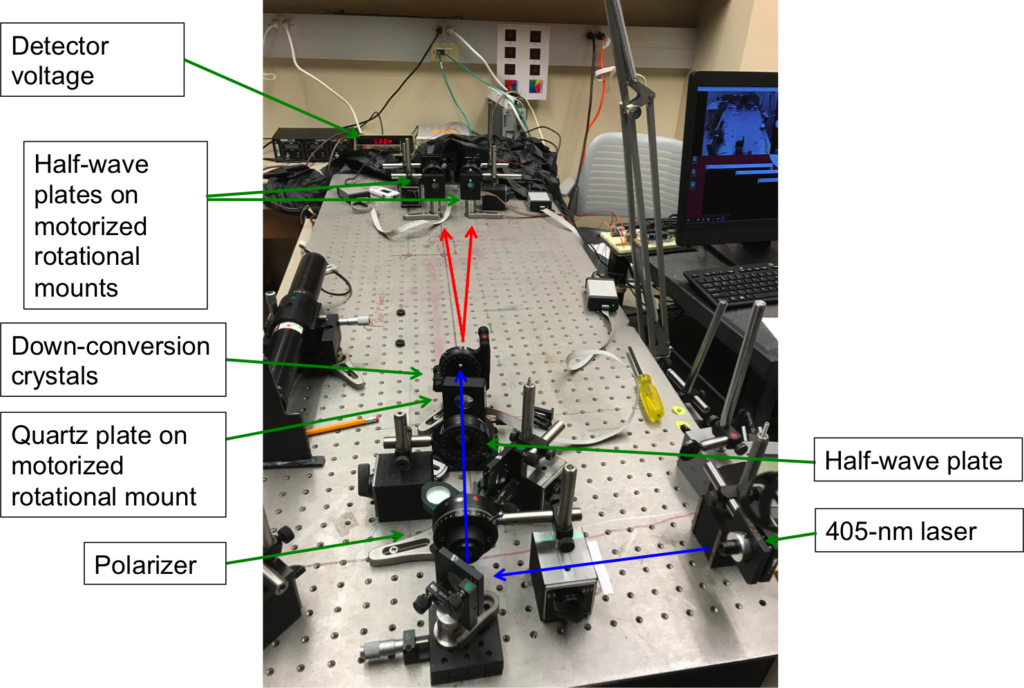
The lab had controls for motorized rotational mounts to make polarization projections, for inserting a quartz plate to make mixed states, and for turning laser and detectors on/off. The image of the remote desktop is shown below. The 2020 write-up for the students is here. The 2021 update is here.
